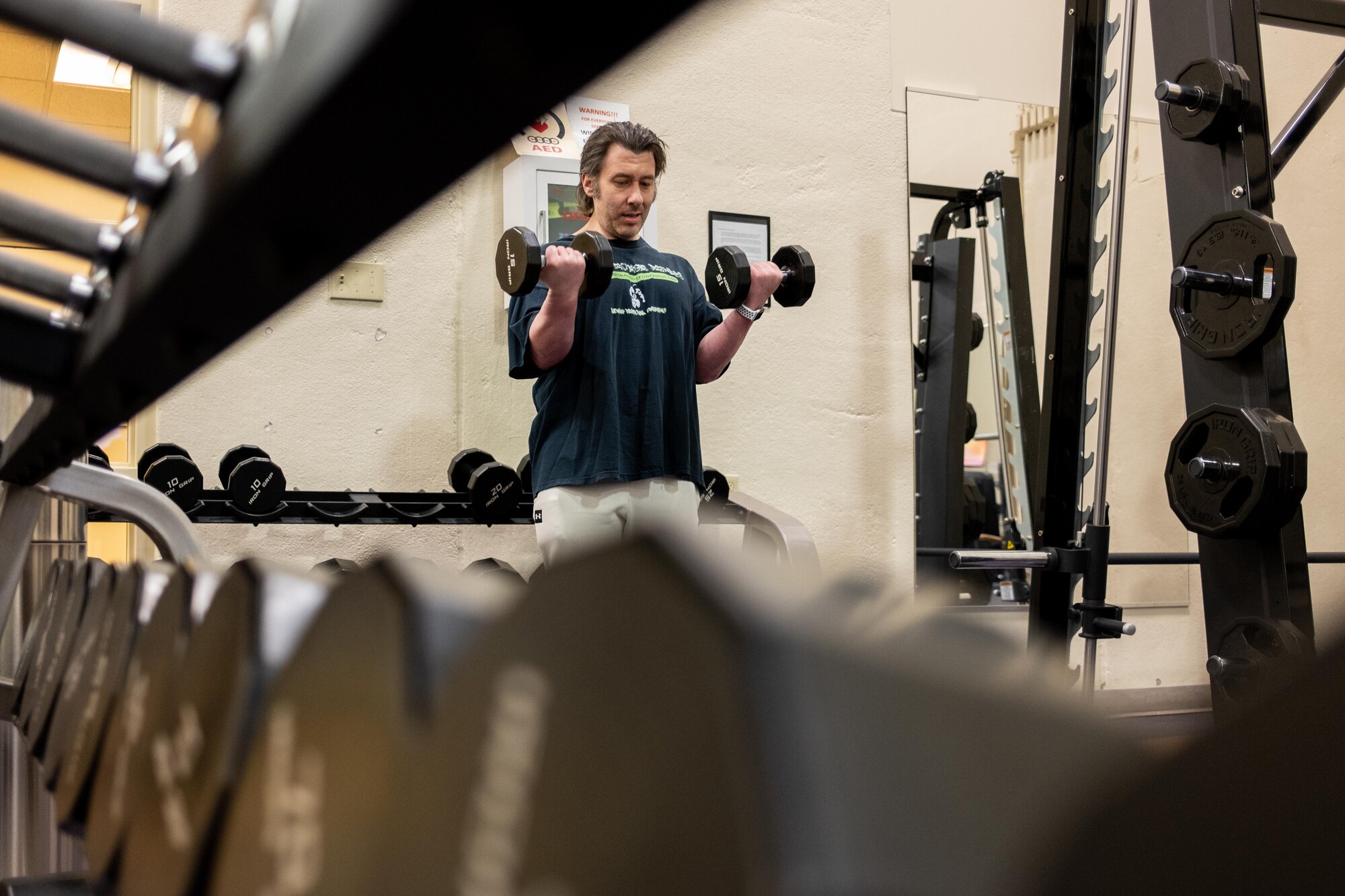Researchers suggest that starting a fitness routine after the age of 40 can be as advantageous as being physically active from youth to adulthood. A recent study in JAMA Network Open highlights that it’s never too late to improve fitness levels and enjoy the associated health perks. The research indicates that boosting physical activity in later years can provide a similar level of risk reduction for conditions like cancer, cardiovascular disease, and overall mortality as being active throughout one’s life.
The study’s authors recommend aiming for 150 minutes of moderate activity (e.g., gardening, housework) or 75 minutes of vigorous activity (e.g., brisk walking, running, swimming, aerobics) per week for optimal risk mitigation, as outlined by Pedro F. Saint-Maurice, PhD, a postdoctoral fellow at the National Cancer Institute’s Division of Cancer Epidemiology and Genetics.
For those aged 40 and above looking to start or resume a fitness regimen, there are important considerations. Gradually ramping up physical activity to meet the recommended weekly guidelines for lowering risks effectively is crucial to prevent injuries. “Start slow and progress steadily,” suggested Resnick. Louis Bezich, the senior vice president of strategic alliances at Cooper University Health Care, shared valuable insights.

In his book “Crack the Code: 10 Proven Secrets That Motivate Healthy Behavior and Inspire Fulfillment in Men Over 50,” Bezich interviewed Dr. Daniel Hyman, the head of Internal Medicine at Cooper University Health Care and an associate professor at Cooper Medical School of Rowan University in New Jersey. Hyman’s recommendation was clear: Consult your physician for an assessment.
With medical approval, start a workout regimen comprising: pre-workout stretching, a gradual warm-up routine involving aerobic exercises such as cycling or treadmill sessions, and a sensible strength training program that progresses to a 30- to 40-minute workout, five days per week.
Key to fitness progress Post-40 fitness hinges on targeted exercises and mindset. Resnick provides insights on the optimal mix of activities for effective results. Following a gentle fitness introduction, individuals over 40 should aim for consistent engagement in: moderate aerobic exercises for 30 minutes daily (at a pace of 100 steps per minute)
Muscle strengthening with all major muscle groups three days a week
Engage in balance routines twice a week. Refer to “The Nia Technique” book for exercise inspiration. Foster a success-driven mindset for fitness objectives post 40. Strong relationships enhance dedication to well-being. Sustain an active social calendar for encouragement.Ensure to prioritize self-care practices such as meditation and mindfulness to cultivate inner peace.
Remember to stay hydrated throughout the day and consume nourishing meals rich in vitamins and minerals. Strive for consistency in your fitness routine and listen to your body’s needs for adequate rest and recovery. Celebrate your progress and small victories along the way to maintain motivation and momentum towards your health goals.
Potential barriers to success The new study says it’s never too late to get in shape and improve our health outcomes, so what’s stopping so many of us? Bezich says the chief barrier to success is mindset. “Most can’t even keep their New Year’s resolution for more than a month or two,” he said. “I attribute this to a weak cognitive association between their day-to-day behavior and their most valued relationships.”
In his own research with physically active men over 50, he found the success factor is an ability to connect the dots between between one’s diet and exercise routines and their ambitions in life. “They get that in order to fulfill their ambitions they need to be and stay healthy. It’s the power of this positive association that keeps them going when others quit,” Bezich said. Those who don’t follow through with their fitness goals, Bezich says, lack a strong “why” factor. So while getting fit after 40 is about easing into specific exercises tailored to success, it’s also about understanding your underlying motivation for doing so.
Overcoming obstacles to exercising
If you’re having trouble beginning an exercise plan or following through, you’re not alone. Many of us struggle getting out of the sedentary rut, despite our best intentions.
You already know there are many great reasons to exercise—from improving energy, mood, sleep, and health to reducing anxiety, stress, and depression. And detailed exercise instructions and workout plans are just a click away. But if knowing how and why to exercise was enough, we’d all be in shape. Making exercise a habit takes more—you need the right mindset and a smart approach.
While practical concerns like a busy schedule or poor health can make exercise more challenging, for most of us, the biggest barriers are mental. Maybe it’s a lack of self-confidence that keeps you from taking positive steps, or your motivation quickly flames out, or you get easily discouraged and give up. We’ve all been there at some point.
Whatever your age or fitness level—even if you’ve never exercised a day in your life —there are steps you can take to make exercise less intimidating and painful and more fun and instinctive.
Ditch the all-or-nothing attitude. You don’t have to spend hours in a gym or force yourself into monotonous or painful activities you hate to experience the physical and emotional benefits of exercise. A little exercise is better than nothing. In fact, adding just modest amounts of physical activity to your weekly routine can have a profound effect on your mental and emotional health.
Be kind to yourself. Research shows that self-compassion increases the likelihood that you’ll succeed in any given endeavor. So, don’t beat yourself up about your body, your current fitness level, or your supposed lack of willpower. All that will do is demotivate you. Instead, look at your past mistakes and unhealthy choices as opportunities to learn and grow.
Check your expectations. You didn’t get out of shape overnight, and you’re not going to instantly transform your body either. Expecting too much, too soon only leads to frustration. Try not to be discouraged by what you can’t accomplish or how far you have to go to reach your fitness goals. Instead of obsessing over results, focus on consistency. While the improvements in mood and energy levels may happen quickly, the physical payoff will come in time.
How much exercise do you need
The key thing to remember about starting an exercise program is that something is always better than nothing. Going for a quick walk is better than sitting on the couch; one minute of activity will help you lose more weight than no activity at all. That said, the current recommendations for most adults is to reach at least 150 minutes of moderate activity per week. You’ll get there by exercising for 30 minutes, 5 times a week. Can’t find 30 minutes in your busy schedule? It’s okay to break things up. Two 15-minute workouts or three 10-minute workouts can be just as effective.
How hard do I need to exercise
Whether an activity is low, moderate, or vigorous intensity varies according to your personal fitness level. As a general guideline, though:
Low-intensity activity: You can easily talk in full sentences, or sing.
Moderate intensity: You can speak in full sentences, but not sing.
Vigorous intensity: You are too breathless to speak in full sentences.
For most people, aiming for moderate intensity exercise is sufficient to improve your overall health. You should breathe a little heavier than normal, but not be out of breath. Your body should feel warmer as you move, but not overheated or sweating profusely. While everyone is different, don’t assume that training for a marathon is better than training for a 5K or 10K. There’s no need to overdo it.
For more on the types of exercise you should include and how hard you should work out, read Best Exercises for Health and Weight Loss.

Getting started safely
If you’ve never exercised before, or it’s been a significant amount of time since you’ve attempted any strenuous physical activity, keep the following health precautions in mind:
Health issues? Get medical clearance first. If you have health concerns such as limited mobility, heart disease, asthma, diabetes, or high blood pressure, talk with your doctor before you start to exercise.
Warm up. Warm up with dynamic stretches—active movements that warm and flex the muscles you’ll be using, such as leg kicks, walking lunges, or arm swings—and by doing a slower, easier version of the upcoming exercise. For example, if you’re going to run, warm up by walking. Or if you’re lifting weights, begin with a few light reps.
Cool down. After your workout, it’s important to take a few minutes to cool down and allow your heart rate to return to its resting rate. A light jog or walk after a run, for example, or some gentle stretches after strength exercises can also help prevent soreness and injuries.
Drink plenty of water. Your body performs best when it’s properly hydrated. Failing to drink enough water when you are exerting yourself over a prolonged period of time, especially in hot conditions, can be dangerous.
Listen to your body. If you feel pain or discomfort while working out, stop! If you feel better after a brief rest, you can slowly and gently resume your workout. But don’t try to power through pain. That’s a surefire recipe for injury.
Establishing consistent exercise routines after the age of 40 involves more than just the physical aspect; it also encompasses the mental attitude and the tactics employed. By adopting a positive mindset, employing intelligent strategies, and dedicating yourself to prioritizing exercise, you can surmount obstacles that previously hindered you and discover a regimen that suits you.
It’s crucial to realize that initiating this change is always possible, and the rewards of frequent physical activity justify the endeavor. Therefore, seize the opportunity today to embark on this journey towards a healthier, happier version of yourself.
Related posts:
Fitness Routines After 40
How to Start Exercising and Stick to It
How to stay fit over 40: top tips for getting into your best shape




